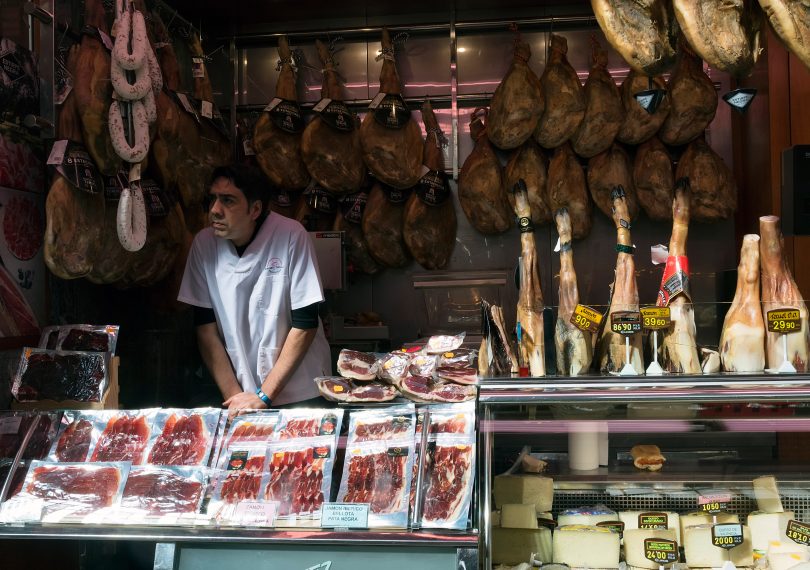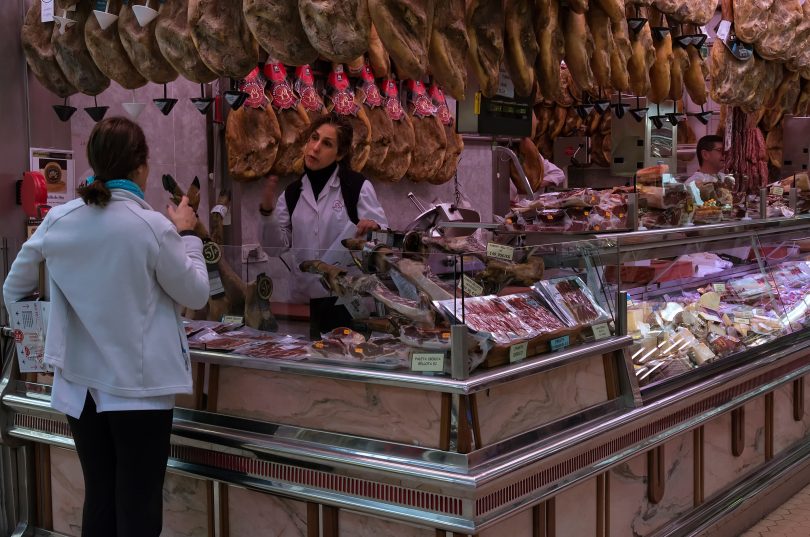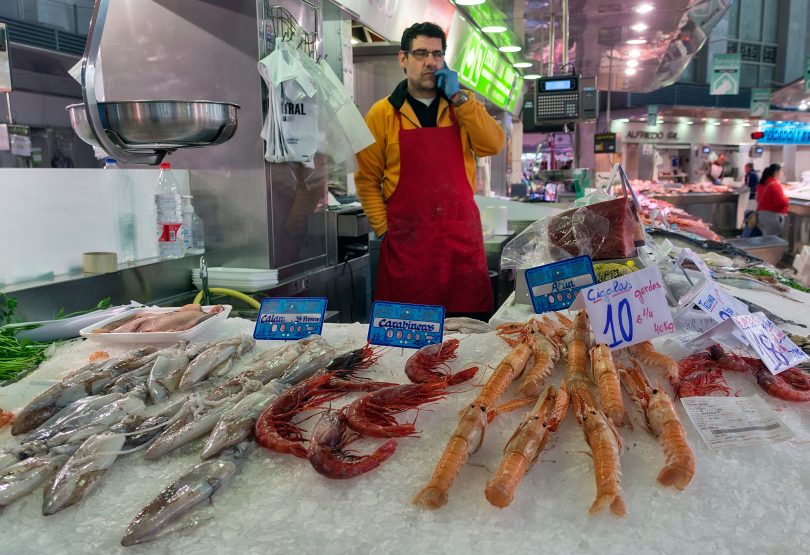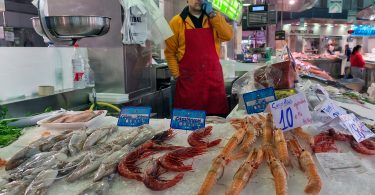
Dining out in Europe can be an adventure, and not just a gastronomic one. It can be scary expensive sometimes. Long gone is the era of Europe on $5 a day. But as my wife and I have learned in eight years of snowbirding on the Mediterranean, you have to adapt and eat as Europeans do.
We spent six weeks this past winter in Valencia, Spain, a city of 800,000 on the coast between Barcelona and Alicante. It’s a great wintering place: lots to see and do, excellent museums and galleries, wonderful architecture, beautiful beach. The mild maritime climate promises (and delivers) lots of sun, minimal rain, and wintertime highs of 12 to 22°C. Snow? Nada.
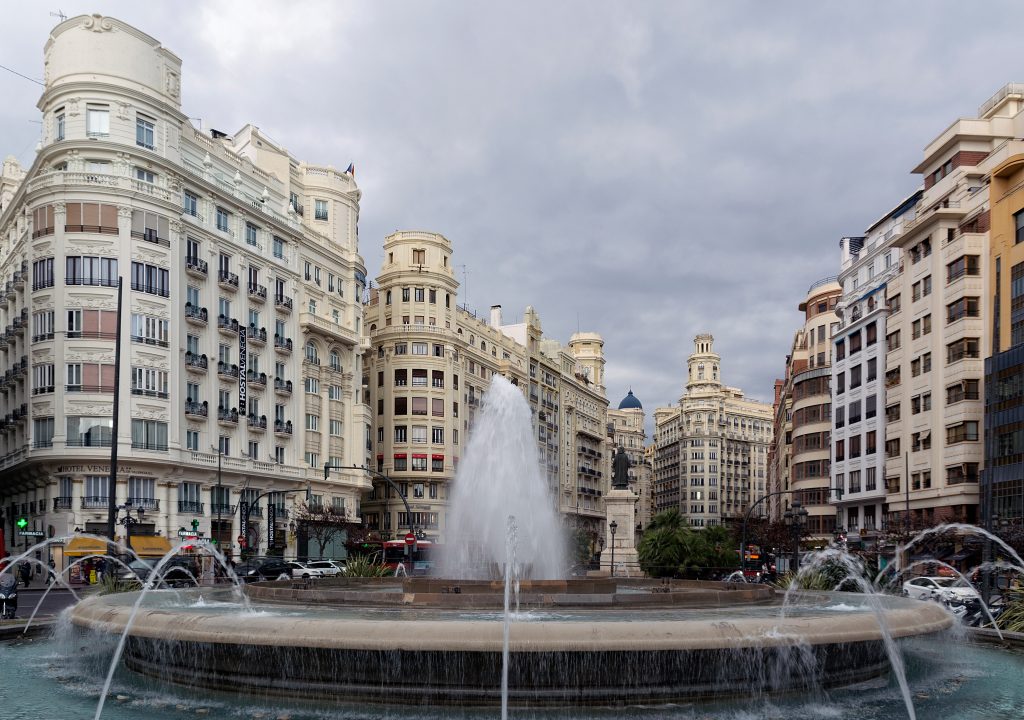
Valencia is rich with architectural gems (City Hall Square is to above) and boasts a long stretch of beautiful Mediterranean beach
Valencia is a fabulous food place too. The region is one of Spain’s richest agriculturally, the mild climate yielding year-round crops. And with over 2,500 restaurants, the city is a great place for dining out. (See my picks below.)
As we were on a budget, we more often cooked and ate at our rented apartment, but that was okay, because Valencia is arguably an even better place for eating in.
This city is so densely populated, it can support supermarkets literally every few blocks. The one we shopped at was two blocks away. Valencia is also dotted with indoor produce markets, including the huge Mercado Centrale, a ten-minute walk, reputedly the largest covered market in Europe, and a modernista architectural gem.
Even with the currency exchange rate at its most punitive ($1.62 CDN), food and groceries were less expensive than at home, and with better quality fresh produce. Much of it comes from nearby, including the justly-famous Valencia oranges.
With alcohol factored in, our total comestibles bill was significantly lower. (As an example, the Cava my wife drank cost the equivalent of $3 at the supermarket; a similar every-day bottle at home: $14.)
So we were happy to cook and eat at home most of the time, but also looked forward to our weekly treat of a meal out.
With so many restaurants, choosing was a challenge. Full disclosure: our tastes do not lean to experimental fare. In our book, fresh, good-quality ingredients, carefully prepared, trumps wildly inventive and exotic. If you’re looking for cutting edge epicurean presentation, there’s plenty on offer in Valencia. Restaurants such as Ricard Camarena have earned a Michelin star by amazing patrons with an imaginative approach, with many surprises. But that’s not what we look for.
We have three rules for dining out. First, ignore recommendations in mass-market travel guides. Chosen restaurants too often jack prices and start catering to foreigners. If you want an authentic, local dining experience, eat where locals do.
Rule two follows: avoid areas tourists frequent most. In Valencia, we gravitated to Bario el Carmen, a bohemian nightclub district near the city centre, densely populated, with lots of restaurants, but too disheveled to attract bus tours.

Casa Paquito
The third and most important rule: eat your big meal at mid-day— 2 p.m. or later in Spain. (Many restaurants don’t even open until then.) It’s a healthier way to eat, and can be a bargain.
Many establishments offer a lunch-time fixed-price menu del dia. The best deals include starter, main, dessert, bread and one drink. We saw prices as high as €25, but you can pay much less and eat well. A few cases in point …
Casa Paquito, a small typically Spanish eatery just off Plaza del Tossal in Carmen. The ambience is intimate, with colourful tile wainscoting, dark wood tables and interesting framed posters on the walls. The menu del dia for €12 included all courses, with five or six choices in each.
My wife had white wine (a huge glass), a generous composed salad, thin and tender steak and fabulously rich chocolate tort. I ordered a beer, hearty garbanzo soup that reminded me of Habitant pea, a lightly-battered scaloppini of chicken breast with fries and hunter sauce, baked apple — and an extra glass of white wine.
Total, tax and service included: €26. All of the food was good and fresh tasting. What would it cost in Canada? With the number of courses and drinks, I’m guessing close to $100.
María Mandiles specializes in “authentic Valencian home cooking,” and offers outdoor seating in Plaza de Carmen, overlooked by a beautiful roccoco-fronted church. The menu included all courses for a rock-bottom €8.95, with three choices in each.
My wife had cream of calabaza (squash) soup with crispy ham, followed by tender strips of curried chicken breast on a bed of buttery mashed potatoes. I ordered mixed salad, and Secreto Iberico, an inexpensive variety of the dry, fine-flavoured ham that is a much-loved Spanish specialty, served with fries and carrot dice. We both had house wine and, for dessert, caramel crepes drizzled with chocolate.
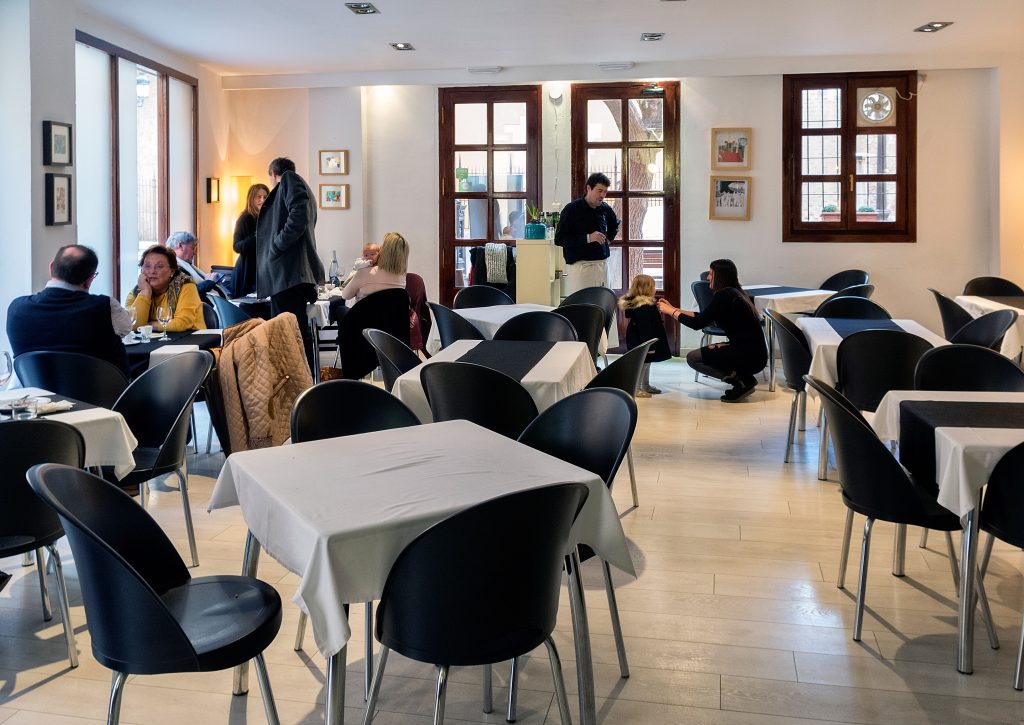
La Pizca de Sal
Everything was prettily presented, fresh and flavourful. Perhaps not quite as good quality as Casa Paquito, but tremendous value. Total with extra glass of wine: €19.85.
Before returning to London, our last meal out was at La Pizca de Sal, a long-time favourite. The Torre del Quart, one of the city’s two surviving medieval tower gates, looms over the square on which La Pizca sits.
The menu del dia on the day we went with visiting friends was €11.90 for starter, main, one drink, bread and dessert.
Our starter of preference — with one dissenting mixed salad order — was a tasty pork paella. Paella was invented in Valencia and the short-grain rice used in traditional recipes, very like arborial rice, grows nearby.
For segundos, we all went for the quarter chicken roasted with potato and carrot. It sounds plain fare, but Spanish chicken is much more flavourful than the stuff we get at home. This was lip-smacking.
My dessert was a superb apple flan, crusted with carmelized sugar. The others opted for a super-rich chocolate pudding. Total for four, with two extra drinks: €53.20. And this may have been the best meal out of the year.
In Valencia, locals love to dine out and are spoiled for choice. That makes the restaurant market very competitive. Result: above-average quality and value.
But if you eat as locals do — main meal at lunch, order from fixed-price, multi-course menus, avoid tourist traps — you can eat well and relatively inexpensively anywhere in Mediterranean Europe. If you’re shopping for a place to spend the winter, that’s good to know.
Gerry Blackwell is a London-based freelance writer. He also took all of the photos illustrating this story.




